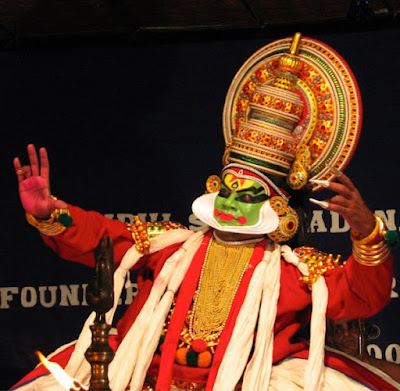The art form combines Nritta (pure dance), Nritya (use of hand gestures), and Natya (acting). There are 24 basic hand gestures or mudras in Kathakali. With the combination of hand gestures, body movements, and expressions, performers communicate with over 600-700 intricate gestures. Performers are also taught to communicate with their eyes and various facial muscles, skills that can take years to perfect.
There are 101 Kathakali plays currently in existence.
The dance performer in the picture is Sadanam Harikumaran.He is an established performer, playwright and choreographer of kathakali dance and the principal of Gandhi Seva Sadan.
Its interesting that each color used here is naturally made from minerals and the white mask is a rice paste mask! Talk about sustainability at its best !!
More videos to come in this series for the facial expressions and the eye expressions!



No comments:
Post a Comment